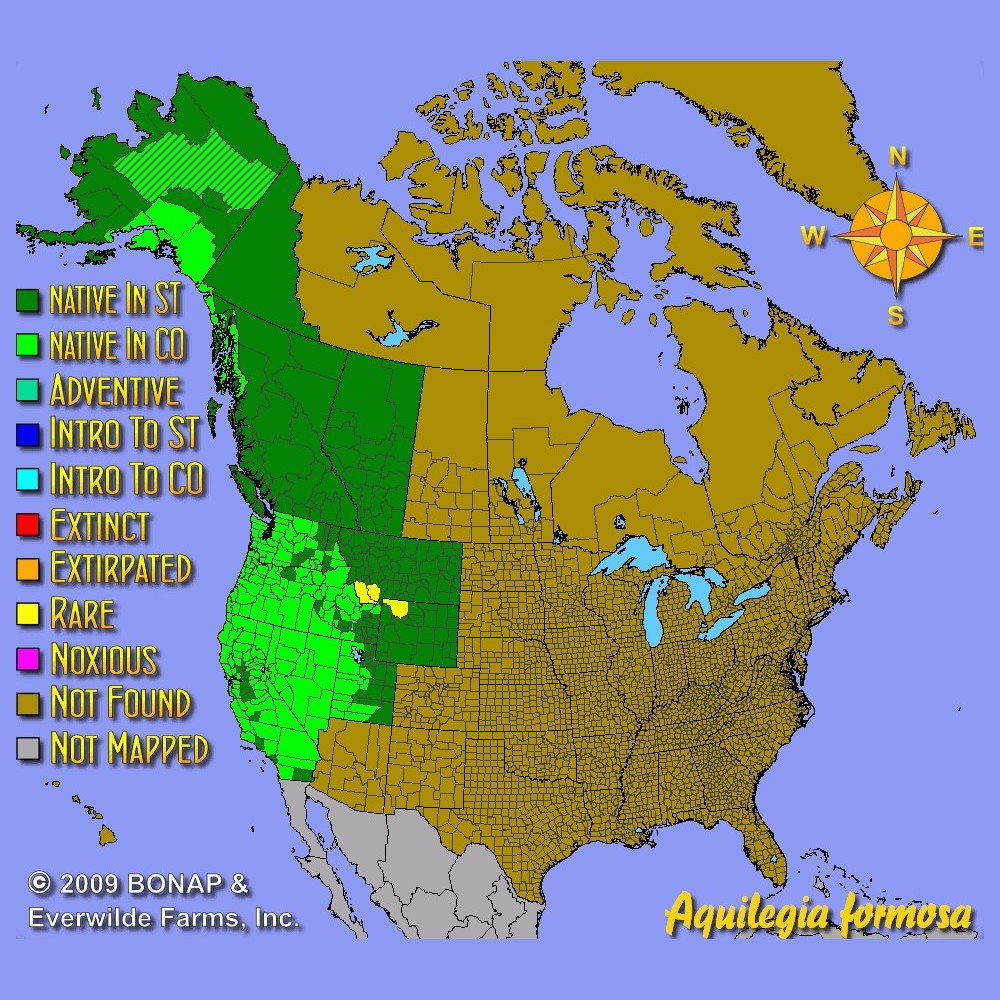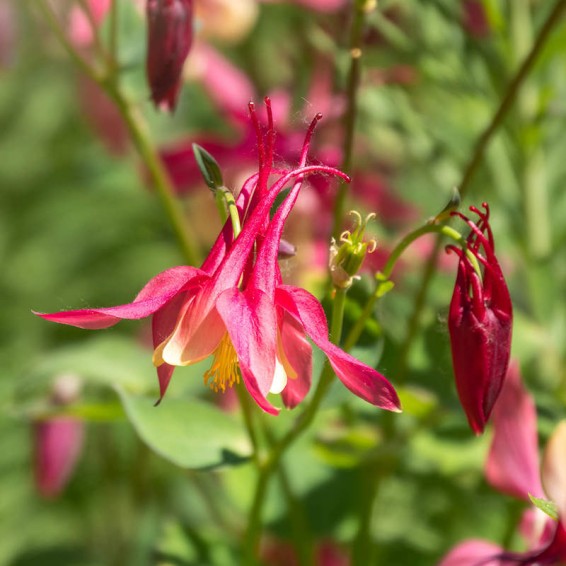Western Columbine Seeds
Aquilegia formosa
- HOW TO GROW
- FAST FACTS
HOW TO GROW
Sowing: Direct sow in early fall, sowing the seed just below the surface of the soil. For spring planting, mix the seed with moist sand and store it in the refrigerator for 60 days before direct sowing after the last frost. The seed can also be started indoors, planted just below the surface of a flat and kept at a temperature of 60-65 degrees F until germination; keep the soil lightly moist.
Growing: Plant in fertile, moist, well-drained soil and full sun or partial shade; this flower appreciates being shielded from the midday sun. Keep the seedlings watered and control weeds. Mature plants tolerate some dryness, but should be watered in the heat of summer. Hot and humid weather may cause the plant to wilt, since this plant prefers cool weather and can survive light frosts. Flowers planted from seed will bloom in their second year of growth. After blooming, the foliage will die off. Established plants can be divided, though they will self sow readily; volunteer plants can easily be transplanted. Deadhead the wilted blossoms if new plants are not wanted. These flowers attract hummingbirds, butterflies, and bees and resists deer. Its natural growth in rocky areas makes it a good choice for rock gardens.
Harvesting: Columbine makes a lovely cut flower. Choose blossoms that have just opened for the longest vase life. Keep in mind that this plant can be toxic and should not be ingested.
Seed Saving: Keep in mind that this plant will cross pollinate easily with other varieties of columbine. Watch the maturing seed pods carefully, since they will open and expose their seed when fully ripe. Shake the open pods into a container to remove the seed. Store the seed in a cool, dry place for up to two years.
FAST FACTS
Common Names: Scarlet Columbine, Crimson Columbine
Latin Name: Aquilegia formosa
Species Origin: US Native Wildflower
Type: Native Wildflowers
Life Cycle: Perennial
USDA Zones: 1, 2, 3, 4, 5, 6, 7, 8, 9, 10, 11
US Regions: California, Mountain, Arid/Desert
Seeds per Ounce: 15,500
Stratification: Cold/Wet for 8 Weeks
Germination Ease: Stratify 8 Weeks
Sunlight: Full Sun, Part Sun, Shade
Height: 30 Inches
Color: Red
Bloom Season: Blooms Late Spring, Blooms Early Summer
Uses: Attracts Pollinators, Attracts Honeybees, Hummingbirds, Deer Resistant
DESCRIPTION

HOW TO GROW
Sowing: Direct sow in early fall, sowing the seed just below the surface of the soil. For spring planting, mix the seed with moist sand and store it in the refrigerator for 60 days before direct sowing after the last frost. The seed can also be started indoors, planted just below the surface of a flat and kept at a temperature of 60-65 degrees F until germination; keep the soil lightly moist.
Growing: Plant in fertile, moist, well-drained soil and full sun or partial shade; this flower appreciates being shielded from the midday sun. Keep the seedlings watered and control weeds. Mature plants tolerate some dryness, but should be watered in the heat of summer. Hot and humid weather may cause the plant to wilt, since this plant prefers cool weather and can survive light frosts. Flowers planted from seed will bloom in their second year of growth. After blooming, the foliage will die off. Established plants can be divided, though they will self sow readily; volunteer plants can easily be transplanted. Deadhead the wilted blossoms if new plants are not wanted. These flowers attract hummingbirds, butterflies, and bees and resists deer. Its natural growth in rocky areas makes it a good choice for rock gardens.
Harvesting: Columbine makes a lovely cut flower. Choose blossoms that have just opened for the longest vase life. Keep in mind that this plant can be toxic and should not be ingested.
Seed Saving: Keep in mind that this plant will cross pollinate easily with other varieties of columbine. Watch the maturing seed pods carefully, since they will open and expose their seed when fully ripe. Shake the open pods into a container to remove the seed. Store the seed in a cool, dry place for up to two years.
FAST FACTS
Common Names: Scarlet Columbine, Crimson Columbine
Latin Name: Aquilegia formosa
Species Origin: US Native Wildflower
Type: Native Wildflowers
Life Cycle: Perennial
USDA Zones: 1, 2, 3, 4, 5, 6, 7, 8, 9, 10, 11
US Regions: California, Mountain, Arid/Desert
Seeds per Ounce: 15,500
Stratification: Cold/Wet for 8 Weeks
Germination Ease: Stratify 8 Weeks
Sunlight: Full Sun, Part Sun, Shade
Height: 30 Inches
Color: Red
Bloom Season: Blooms Late Spring, Blooms Early Summer
Uses: Attracts Pollinators, Attracts Honeybees, Hummingbirds, Deer Resistant




